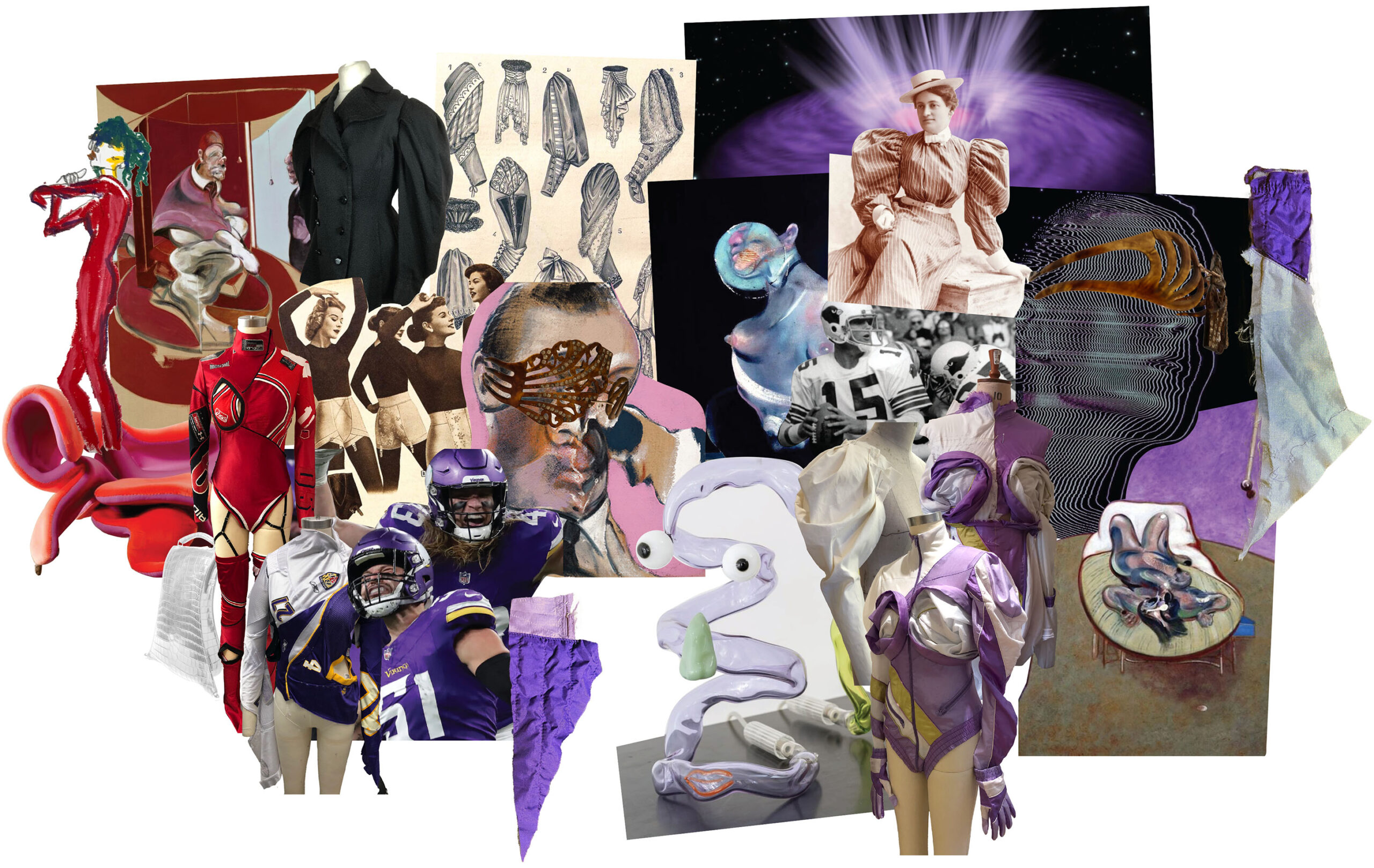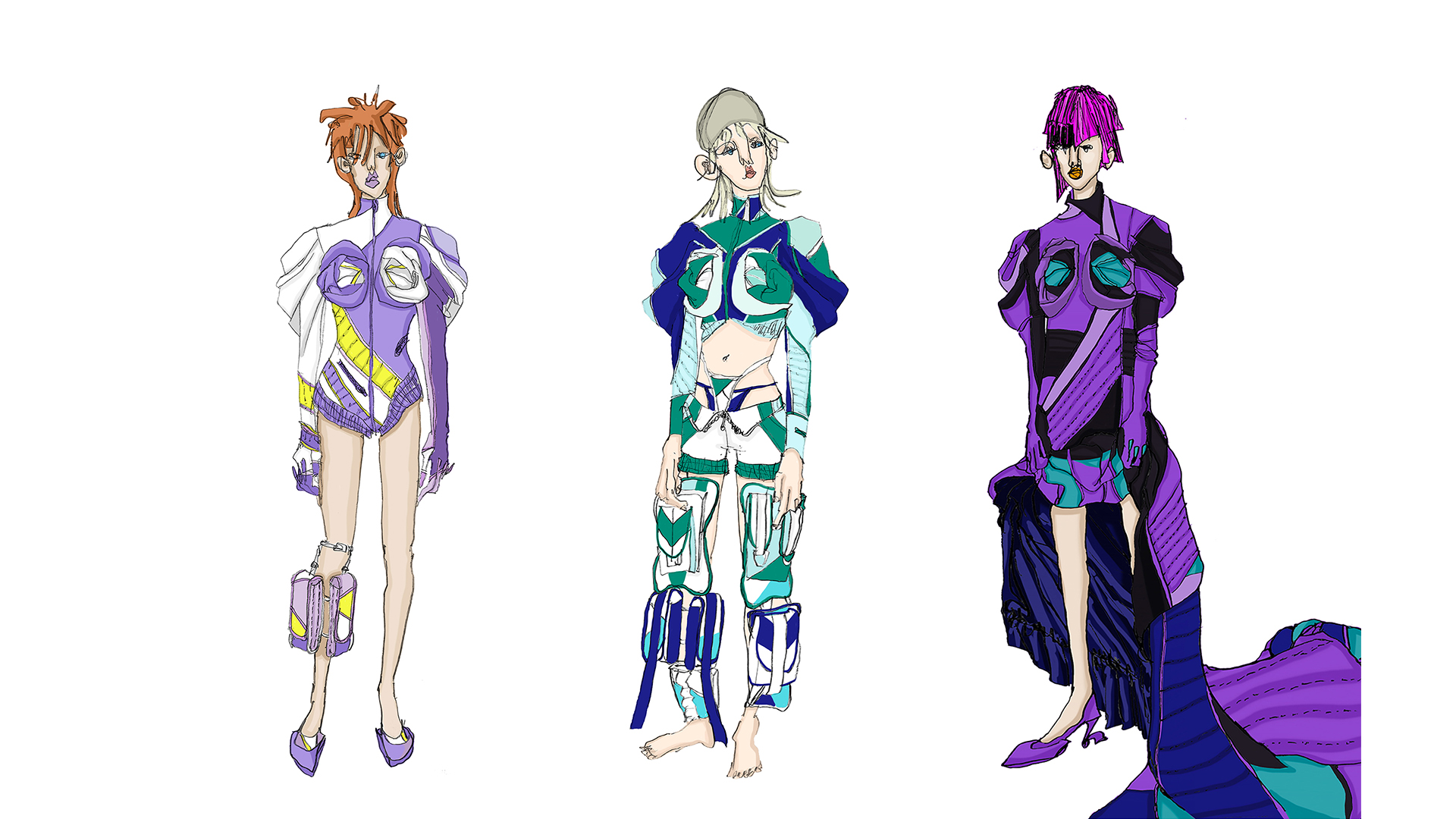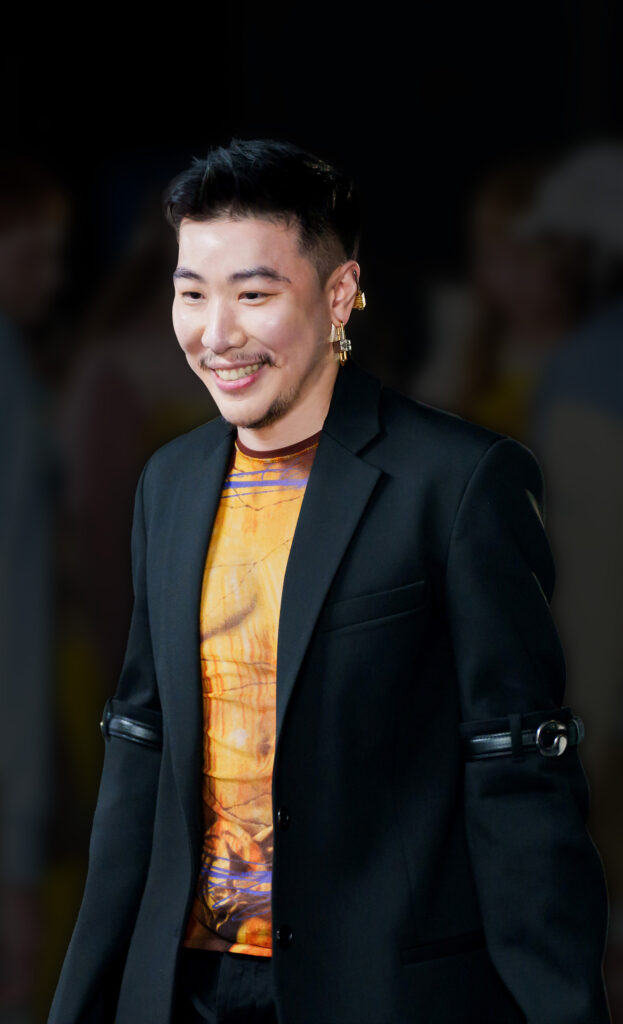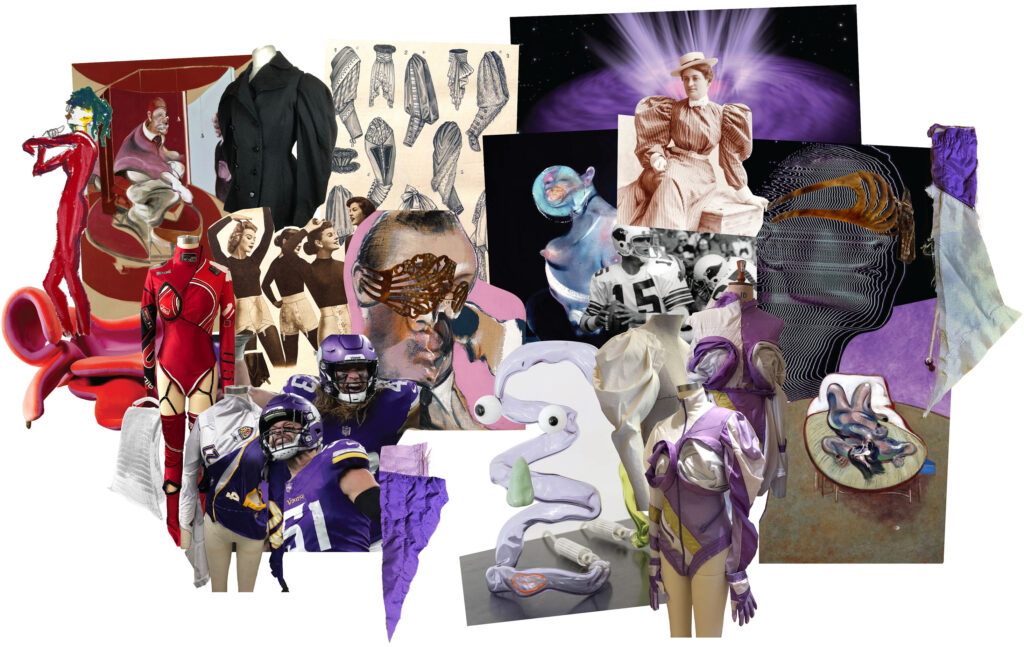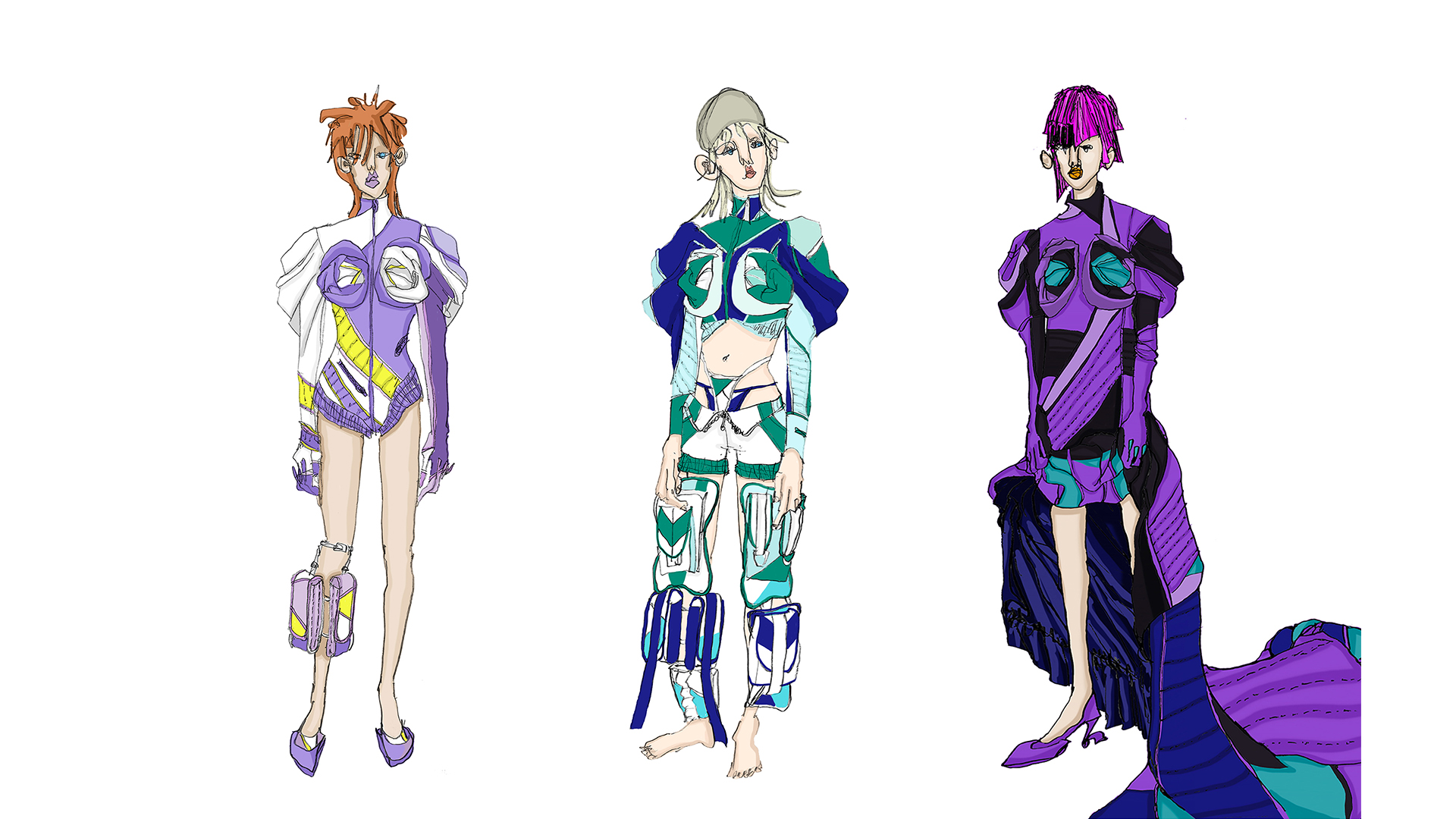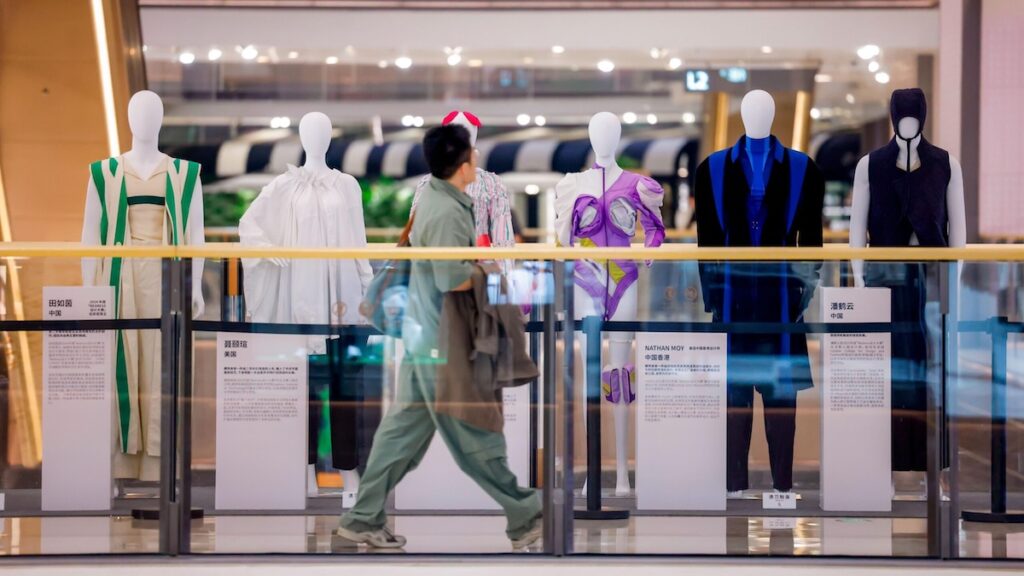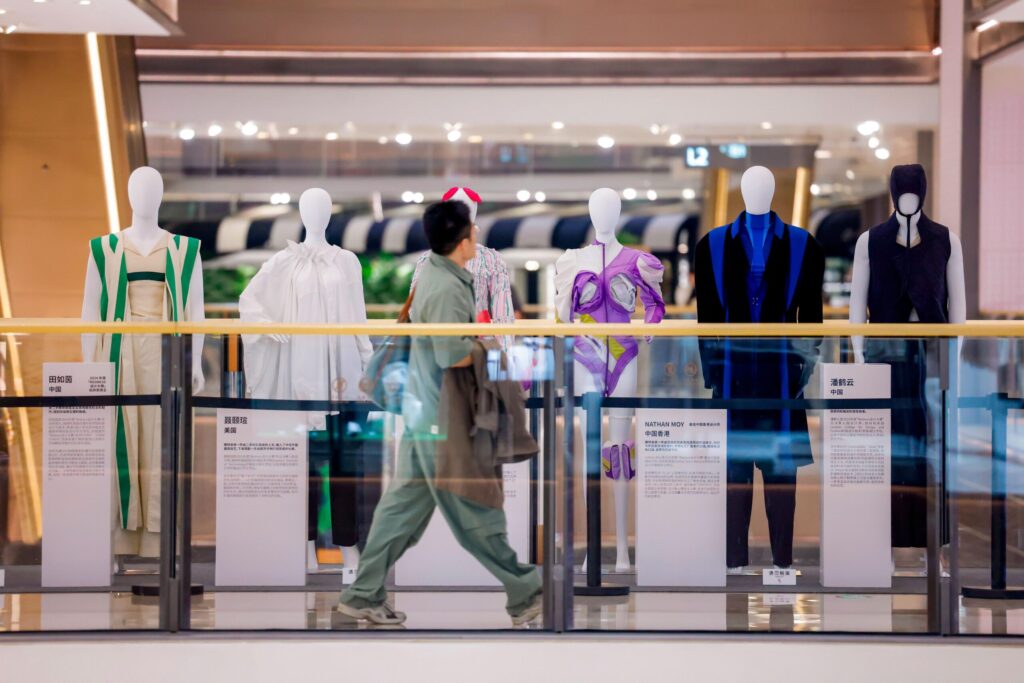Redress Design Award Collection
Nathan’s Redress Design Award collection, ‘FLUX’, explores the intersection of time, technology, and transformation. He reconstructs windbreakers into futuristic looks lined with deadstock polyester and factory surplus zippers. The avant-garde aesthetic of optical illusions and digital glitches aim to capture the urgency of adapting in a rapidly evolving world. Designing for longevity, Nathan incorporates modular elements including detachable pocket bags to allow for easy repairs, and adjustable bra straps between pouches to accommodate different heights.

